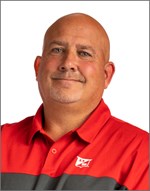Reducing Costs For 2023 – Part 2 of the Series
BY Dairyland Seed Agronomy Team
As harvest season progresses and plans for the upcoming season’s cropping intentions are becoming firm, many producers are considering their options as to managing higher input prices.
A large portion of these input costs are centered around fuel and crop nutrients. This article is the second part of a two-part series looking at potential opportunities to help manage costs and/ or increase return on investment. The first part of this series can be found on our website https://www.dairylandseed.com/articles/reducing-costs-for-2023-part-1/.
Every farm/ranching operation is different and not always will one practice or option be the best option or practice for a field or for your business. However, the options listed below, as well as the options previously suggested, provide potential ideas on where to start.
- Reducing Tillage or No-Till: Not every farm or acre is the same, and not always is one tillage system always the best for every acre. With the high cost of diesel fuel and as hard as the soil is in many of the areas affected by drought, look at reducing tillage or trying No-Till on a few acres for next growing season. If you eliminate a fall tillage trip or switch to a less aggressive tillage system, you will reduce your fuel costs, wages, as well as wear and tear on your equipment for those acres. This is especially true for trying No Till or reduce till and planting soybeans for the next cropping season. Utilizing Dairyland Seed soybeans on those acres will be a great choice because of the high yield and agronomic traits, but also because the flexibility of the Enlist®weed control system, that makes switching to a reduced tillage system easier and less worrisome, and potentially more profitable.
- Fall Herbicide Application/Weed Control: Many herbicides have labels that allow fall applications. This potentially frees up time in the spring to do other activities in your operation that may provide a better Return-On-Investment (ROI). In some instances, fall application of herbicides allows better control (such as marestail as well as others) but it also allows applications to problem areas, borders, or high density weed areas. These applications are easier if notes are recorded earlier in the growing season using Granular Insights.
- Changing Crop Rotations: On many acres, we see a corn and soybean rotation. If we have a field or two that is in soybeans now, or we were intending to grow corn-on-corn on those acres, and the cost of fuel and crop nutrients is prohibitive to put corn back on those acres, we could look at seeding Dairyland Seed hybrid alfalfa on those acres. Dairyland Seed’s hybrid alfalfa would be a great option for those acres not only would you break up a disease and insect cycle, but you would be potentially introduce a new and profitable crop to your operation. (***Review your herbicide application history as many herbicides have rotational restrictions to alfalfa.***)
- Variable rating your plant populations or reducing your plant populations: We all have areas of farms that historically do not yield as well as others, either to lighter soil types that do not have the water-holding capacity or available water from rainfall, which is your biggest yield limiting factor. On those acres with lower rainfall or lower water-holding capacity, it may be in your best interest to look at lowering your plant populations and taking those seed dollars and investing into other areas of the farm with increased population or other investments or pocketing those savings. If you are reducing your fertility level or have acres that have lower fertility levels, you may be better served to reduce those plant population on those acres. The analogy is if you invite more people to a dinner party you better make sure you have enough food for those guests. This applies to having too many seeds per acre and not enough fertility -- you have the same result. Utilizing Granular Insights from Corteva to help set up a prescription on what parts of your fields or farms to set up a variable rate prescription map, is a great way to go in helping to manage this process.
Working through and making decisions on your farm or ranch can be challenging. This can be especially true and more challenging when input costs are at their historic highs. We at Dairyland Seed work hard to partner with your to help make your acres more productive and profitable. If you have questions about these or other agronomic topics, please contact your Dairyland Seed team.
 |
 |
 |
 |
 |
| Brian Weller Western Region 507.456.3034 |
Dan Ritter Central Region 219.863.0583 |
Branden Furseth Northern Region 608.513.4265 |
Mark Gibson Eastern Region 260.330.8968 |
Amanda Goffnett Eastern Region 989.400.3793 |
